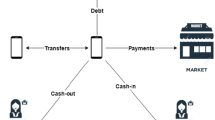Abstract
As medical insurance continues to grow in size, the losses caused by medical insurance fraud cannot be underestimated. Current data mining and predictive techniques have been applied to analyze and explore the health insurance fraud population. However, previous studies only provide summary results and do not show the details of comparative analysis during the visit, resulting in the inability of auditors to quickly identify anomalous behavior. In this paper, we propose a visual analytics system for interactive medical insurance fraud detection to support the exploration and interpretation of different access processes. We propose a weighted MinDL to improve the accuracy of visit pattern classification in the time-series modeling process, and design a data analysis model and visual analysis view based on medical insurance fraud characteristics to reveal and explore the characteristics of medical insurance fraud groups. We collaborate with related organizations to design and implement an interactive visualization for medical insurance fraud group detection using real Medicare data and expert interviews The system is effective and practical in detecting and analyzing medical insurance fraud syndicates.
Access this chapter
Tax calculation will be finalised at checkout
Purchases are for personal use only
Similar content being viewed by others
References
Aldrich, N., Crowder, J., Benson, B.: How much does medicare lose due to fraud and improper payments each year?, Sentinel (2014)
Sithic, H.L.; Balasubramanian, T. Survey of insurance fraud detection using data mining techniques. arXiv2013, arXiv:1309.0806
V erma, A.; Taneja, A.; Arora, A.: Fraud detection and frequent pattern matching in insurance claims using data mining techniques. In: Proceedings of the 2017 Tenth International Conference on Contemporary Computing (IC3), Noida, India, 10–12 August 2017; pp. 1–7 (2017)
Francis, C.; Pepper, N.; Strong, H. Using support vector machines to detect medical fraud and abuse. In: Proceedings of the International Conference of the IEEE Engineering in Medicine & Biology Society , Boston, MA, USA, 30 August–3 September (2011)
Kumar, M., Ghani, R., Mei, Z.S.: Data mining to predict and prevent errors in health insurance claims processing. In: Proceedings of the 16th ACM International Conference on Knowledge Discovery and Data Mining. New York: ACM Press, 2010: 65–74 (2010)
Johnson, M.E., Nagarur, N.: Multi-stage methodology to detect health insurance claim fraud. Health Care Manag. Sci. 19(3), 249–260 (2016)
Botelho, J., Antunes, C.: Combining social network analysis with semi-supervised clustering: a case study on fraud detection. In: Proceedings of Mining Data Semantics (MDS’2011)in Conjunction with SIGKDD (2011)
Jamshidi, S., Hashemi, M.R.: An efficient data enrichment scheme for fraud detection using social network analysis. In: Sixth International Symposium on Telecommunications (IST), (pp. 1082–1087). IEEE (2012)
Wilson, J.H.: An analytical approach to detecting insurance fraud using logistic regression. J. Finance Account. 1, 1 (2009)
Batal, I., Fradkin, D., Harrison, J., Moerchen, F., Hauskrecht, M.: Miningrecent temporal patterns for event detection in multivariate time series data. In: Proceedings of the 18th ACM SIGKDD International Conference Knowledge Discovery DataMining (KDD), 2012, pp. 280–288 (2012)
Liu, C., Wang, F., Hu, J., Xiong, H.: ‘‘Temporal phenotyping from longitudinal electronic health records: A graph based framework. In: Proceedings of the 21th ACM SIGKDD Inernational Conference Knowledge Discovery Data Mining, pp. 705–714 (2015)
Shin, H., Park, H., Lee, J., et al.: A scoring model to detect abusive billing patterns in health insurance claims. Expert Syst. Appl. 39(8), 7441–7450 (2012)
Phua, C., Alahakoon, D., Lee, V.: Minority report in fraud detection: classification of skewed data. ACM SIGKDD Explorations Newsl 6(1), 50–59 (2004)
Liu, C., Zhang, K., Xiong, H., Jiang, G., Yang, Q.: ‘Temporal skeletonization on sequential data: Patterns, categorization, and visualization.’ IEEE Trans. Knowl. Data Eng. 28(1), 211–223 (2016)
Yang, J., Liu, C., Teng, M., Xiong, H., Liao, M., Zhu, V.: Exploiting temporal and social factors for B2B marketing campaign recommendations. In: Proc. IEEE International Conference Data Mining, Nov. 2015, pp. 499–508 (2015)
Jurgovsky, J., et al.: Sequence classification for credit-card fraud detection’,’. Expert Syst. Appl. 100, 234–245 (2018)
Carta, S., Fenu, G., Recupero, D.R., Saia, R.: Fraud detectionfor E-commerce transactions by employing a prudential multiple consensus model, J. Inf. Secur . Appl., vol. 46, pp. 13–22, Jun (2019)
Liu, G., Guo, J., Zuo, Y., Wu, J., Guo, R.-Y.: Fraud detection via behavioral sequence embedding. Knowl. Inf. Syst. 62, 2685–2708 (2020)
Lin, Y., Wong, K., Wang, Y., et al.: Taxthemis: Interactive mining and exploration of suspicious tax evasion groups. IEEE Trans. Visual Comput. Graphics 27(2), 849–859 (2020)
Klimov, D., Shahar, Y., Taieb-Maimon, M.: Intelligent visualization and exploration of time-oriented data of multiple patients. Artif. Intell. Med. 49(1), 11–31 (2010)
Toyoda, S., Niki, N.: Visualization-based medical expenditure analysis support system. In: 2015 37th Annual International Conference of the IEEE Engineering in Medicine and Biology Society (EMBC). IEEE, 2015: 1600–1603 (2015)
Zhou,J., et al.: MedicareVis: a joint visual analysis method for health insurance anti-fraud. J. Comput.-Aided Design Graph. 33(09), 1311–1317 (2021)
Chen, Y., Xu, P., Ren, L.: Sequence synopsis: Optimize visual summary of temporal event data. IEEE Trans. Visual Comput. Graphics 24(1), 45–55 (2017)
Jian, P., Han, J., Mortazavi-Asl, B., et al.: PrefixSpan: mining sequential patterns efficiently by prefix-projected pattern growth. In: International Conference on Data Engineering. IEEE Computer Society (2001)
Li, Z., Zhao, Y., Botta, N., et al.: COPOD: copula-based outlier detection. In: 2020 IEEE International Conference on Data Mining (ICDM). IEEE, 2020: 1118–1123 (2020)
Lv, C., Ren, K., Zhang, H., et al.: PEVis: visual analytics of potential anomaly pattern evolution for temporal multivariate data. J. Visual. 1–17 (2021)
Acknowledgments
This work is supported by the National Natural Science Foundation of China under Grant No.62162046, the Inner Mongolia Science and Technology Project under Grant No.2021GG0155, the Natural Science Foundation of Major Research Plan of Inner Mongolia under Grant No.2019ZD15, and the Inner Mongolia Natural Science Foundation under Grant No. 2019GG372.
Author information
Authors and Affiliations
Corresponding author
Editor information
Editors and Affiliations
Rights and permissions
Copyright information
© 2024 The Author(s), under exclusive license to Springer Nature Singapore Pte Ltd.
About this paper
Cite this paper
Dong, R., Liu, H., Guo, X., Zhou, J. (2024). Visitors Vis: Interactive Mining of Suspected Medical Insurance Fraud Groups. In: Sun, Y., Lu, T., Wang, T., Fan, H., Liu, D., Du, B. (eds) Computer Supported Cooperative Work and Social Computing. ChineseCSCW 2023. Communications in Computer and Information Science, vol 2012. Springer, Singapore. https://doi.org/10.1007/978-981-99-9637-7_35
Download citation
DOI: https://doi.org/10.1007/978-981-99-9637-7_35
Published:
Publisher Name: Springer, Singapore
Print ISBN: 978-981-99-9636-0
Online ISBN: 978-981-99-9637-7
eBook Packages: Computer ScienceComputer Science (R0)





